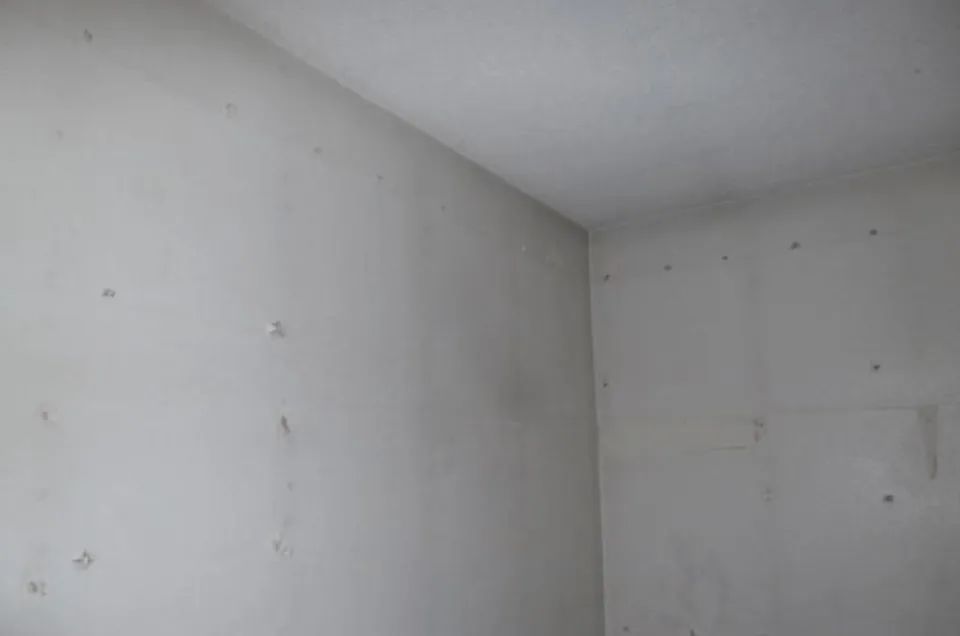Oftentimes, inspectors and contractors will receive phone calls from homeowners who describe a mold problem that has recently developed on the walls and ceilings of their homes. Sometimes, they describe the mold patterns as black stains on the walls and ceilings that seem to be following the framing of the house.
The good news for these homeowners is that the stains are not mold and they are unlikely to present a health hazard to the occupants or a structural hazard to the building. The problem they are describing is called “ghosting” or “thermal bridging,” and, though innocuous, it can be a nuisance.
If you are out touring homes you will occasionally find a house with this unusual staining pattern and it is helpful to understand why it is happening and what can be done to correct it.
Understanding the problem of ghosting
To visualize thermal bridging, let’s think about a house in the wintertime – say, in the cold climate of Salt Lake City. You are inside your cozy warm home cooking and cleaning and breathing and showering and this creates humidity inside the home. You might also be burning candles, incense or wood for a fire. In the winter, the insulation in your house, if it is doing its job, will help keep the cold out and the warm in. The insulation is installed in the stud bays inside the walls and on the floor of the attic. The limiting factor for most insulation is that it does not cover the wood framing of the building, just the empty spaces between the framing.
Ghosting happens when mildly damp, warm and possibly sooty interior air condenses on the sections of walls and ceiling that are colder because they are that uninsulated section of the wood frame. The result: black sooty stains on your walls and ceilings that follow the patterns of the framing. Sometimes you can even see the nails in the sheetrock which, because they are metal, are even colder and more prone to becoming a condensing surface. Typically, the amount of condensation is not enough to cause a mold or structural problem, but it does create irritating lines on your walls and ceilings. So … how do you fix this?
Understanding how to repair ghosting and black stains
The first thing you need to do to stop ghosting is eliminate indoor air particulate: Stop burning candles, firewood or incense. The next step is to monitor your relative humidity inside the house: Buy an inexpensive relative humidity and temperature meter and try and keep your indoor relative humidity below 55 percent during the cold winter months. You can typically do this by turning on bath fans, which will have a drying effect on your building as you vent moist warm air to the outside and replace it with dry cold air. Finally, you will need to use a stain-killing paint to seal up the stains and then repaint the walls and ceilings. This is the expensive and inconvenient part.
If you see the staining developing in larger patterns on the wall or ceiling, in places between the framing, this indicates the wall or ceiling is likely not insulated correctly. The repair, in that case, unfortunately, is to open up the wall or ceiling and insulate it properly.
What if the black stains are actually mold?
If you call a professional and determine that the black stains are actually mold, you have a few options depending on how severe the mold is. Regardless of what you do, it essential that you contact an expert to appraise the situation and determine the health risks and the extent of the issue. Once you’ve done so, you can call in a cleaning company, which will scrub the infected area down with special detergents and cleaning agents. Or, if the mold is less severe, you can create a mixture of cleaning agents and scrub the mold yourself. To do this, follow the steps below:
- Create a solution that is 1/4 bleach and 3/4 water.
- Thoroughly soak the affected areas of the wall until it is saturated with the solution.
- Let the solution soak into the affected areas for ~5-10 minutes.
- Scrub the affected area with a brush until the mold stains are removed.
- Repeat until stains have been cleansed.
If you determine that the mold is actually beneath the surface of the wall, you can spray the affected area with a mixture of white vinegar and water and let it dry. Either way, it’s important to consult with your local mold removal expert and/or your local cleaning experts. They can help you determine the severity and extent of the problem, whether it’s ghosting and black stains on the walls or mold.
How can I prevent mold from forming?
To prevent mold from forming, check out the following tips:
- Make sure to run your bathroom’s fan while bathing and after to prevent moisture from accumulating. If possible, shower with the door open to encourage circulation and proper ventilation.
- Mop up any significant spills from water or other liquids quickly.
- Use mold-resistant paint in bathrooms and other rooms where there is significant moisture.
- Clean your bathroom frequently.
We hope this helps you better understand what you are seeing in your own home or in homes on the housing market you are evaluating to purchase. Enjoy your house hunting! Remember, knowledge makes it fun.
Originally published by Ryan Smith


